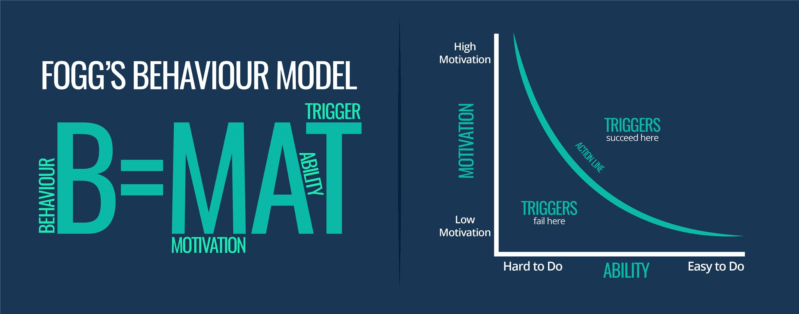Applying Behavioural Science with Advanced Technologies to Predict & Influence Human Behaviour
Behavioural science by itself is not something new which refers to the use of scientific methods to study human behaviours. How about applying behavioural science to leverage big data with advanced technologies like Artificial Intelligence (AI) and Machine Learning (ML)? By the meaning itself, behavioural science makes a lot of sense when applying to applications design because all applications are made for humans to ultimately generate sales, improve operational efficiency and enhance business growth. Many technologies companies have claimed that they applied behavioural science in their product or solution but only a few of them actually explained what it does and how it involved in the technologies.
In general, if the behavioural science is applied appropriately with the advanced technologies, it allows the organisations to predict how a customer/ user is going to behave with a high level of certainty and take particular actions to drive his/ her behaviour. Let’s find out what are the behavioural science methodologies that are available and how can we apply them to predict and influence human behaviour to help organisations?
Type of Behavioural Science Models/ Theories & How Can It Be Applied
1. Fogg Behaviour Model (also knows as FBM)

Persuasive Design – Fogg Behaviour Model (Source from: Mohan Krishnamurthy, Ph.D, Medium | Feb 15, 2018)
This model was published in 2009 by Brian Jeffrey Fogg for analysing and designing human behaviour. FBM describes a simultaneously present of three factors can drive behaviour, which includes:
1) Motivation: The desire or willingness to do act on something. (Pleasure/ pain, hope/ fear and social acceptance/ rejection)
2) Ability: The skill or convenient level to act on that something (Time, money, physical effort, brain cycles/cognitive effort, social deviance and non-routine)
3) Trigger: An emotion or condition that causes the occurrence of a behaviour (Spark, facilitator and signal)
In brief, the model explained that when you have high motivation and it is easy to do, a trigger will be in place. Whereas, If you have high motivation and low ability, you will get frustrated or you will get annoyance if it is easy to do but you have low motivations.
This model is suitable to apply in applications or tools for sales and marketing to increase conversions, sales and profits by influencing consumer’s behaviour. By leveraging big data with this behavioural model, the organisations can analyse and predict which component of FBM is lacking based on the historical data and to uncover the potential trends or patterns. Based on the analysed outcome, the organisations could take certain actions to increase the level of motivation or ability to trigger a target behaviour of the targeting consumers and sales people. For example, if your target audiences have high motivations but low abilities caused by lacking of time, the marketer can provide easier way for the consumer to buy your product or service such as buy-by-calling, online order or cash-on-delivery. (Source from Medium, Behaviour Model for Persuasive Design)
2. Hook

Nir Eyal developed the idea of the “hook model” in 2014. The model defined the looping cycle of four phase process that helps companies to build products that create habit-forming behaviour in users, which consists of:
1) Triggers: There are two types of triggers which are external triggers and internal triggers. External triggers are the cause of an action due to explicit event or intentions which contain information of what to do next. The most common example would be a call-to-action button. The internal triggers formed through an association in the person’s memory and the most frequent internal triggers are negative emotions.
2) Action: The phase of action refers to the simplest behaviour you can get users to engage in with their anticipation of a reward after a trigger. The example of simple behaviour includes a search on Google, watch a YouTube video or scrolling Facebook. The B=MAT format from FBM can define the likeliness of an action (behaviour).
3) Variable Reward: A reward is a direct result of an action to give users what they came for but provide something positive to make them feel good. The variable reward will leave the user a feeling of mystery or curiosity about what they might receive the next time when they engage. There are three types of rewards:
- Rewards of the tribe – Social rewards that are variable in nature and feel good through cooperation, competition and partnerships like as simple as when our contents got liked or commented with positive feedback.
- Rewards of the hunt – The hunt for material rewards such as the money you might win from playing lottery. It could be a prolonged play to reward users by letting the users stay in the game to achieve something that they want.
- Rewards of self-achievement – An intrinsic motivations like mastery, competency, consistency and accomplishment. Autonomy could be a way to increase the feeling of certainty from anticipation or an accomplishment though levels to let users gauge their personal development.
4) Investment: A phase to increase the likelihood for the users to come back for more in the future through the hook by loading the next trigger of the hook.
Source from: Anders Toxboe, Apr 11, 2019 (Making the Hook Model actionable)
This model could be applied in the product development process to check whether your new product or current product has the potential to become a habit-forming product. In terms of technologies, the model could be applied in the applications for timely product evaluation and new product testing together with machine learning to always improve and produce a better products with a great habit-forming characteristic. In addition, organisations should utilise hook model in their social media platforms and conversational platforms/ chatbot to improve the likelihood of influencing customer behaviours by using nudging approach in omnichannel to optimise sales and revenue while improving customer retention.
3. Flow Theory

Flow Theory (Csíkszentmihályi, 1990)
The theory of flow is named by Mihály Csíkszentmihályi in 1975. The state of flow is a mental state in positive psychology, in which a person is intensively focusing in performing a certain task. In 1990, he had published a book, Flow: The Psychology of Optimal Experience which suggested that flow has numerous benefits to happiness because it is a joyous thing to be in a state of flow.
Flow is achieved when perceived challenges and skills are above an individual’s average levels. On the other hand, a person will experience little challenges when having low to no skill.
“The best moments in our lives are not the passive, receptive, relaxing times . . . The best moments usually occur if a person’s body or mind is stretched to its limits in a voluntary effort to accomplish something difficult and worthwhile”
– Mihály Csíkszentmihályi (1990) –
When someone triggers the “flow” button, it will derive optimal experience and brings a lot of positive effects. It will increase the person’s intrinsic motivation to move towards a goal while achieving the goal with great performance. It also increases the satisfaction of the person and engagement throughout the process of performing the activity.
In the aspect of technologies, flow theory can be employed within organisations with talent management and human resources applications/ software to identify individual intrinsic needs on the job to increase employee or sales satisfaction, motivation and performance. It also could tweak aspects of jobs to induce the flow. For example, training sales people on the attitudes needed for a successful sale and providing them with challenging but achievable KPIs to boost sales performance.
4. Self-Determination Theory

Self-determination Theory (Deci & Ryan, 1980)
In 1980, Edward Deci and Richard Ryan first introduced the theory of self-determination when publishing their book with the title of Self Determination and Intrinsic Motivation in Human Behaviour. Self-Determination Theory (SDT) is a macro theory which involved three main intrinsic needs or psychological needs that motivate a person to initiate a behaviour based on Deci and Ryan. The three intrinsic needs are:
1) Competence: The need to deal with the environment effectively. People have a need to build their competence in developing mastery by efficiently perform the tasks that are important to them to develop mastery with the concerns of achievements, knowledge, and skills.
2) Autonomy: The need to control the course of lives. People need to feel that their own behavior is well controlled by themselves.
3) Relatedness: The need to have a close and affectionate relationship with others. People have a need to feel a sense of belonging and connected need with others and each of us needs someone to some degree.
Source from: Courtney E. Ackerman, MSc., Apr 23, 2020 (Self-Determination Theory of Motivation: Why Intrinsic Motivation Matters)
This model helps organisations to understand the intrinsic motivations that influence behaviour change. It could be a great model to back the technologies to evaluate and understand by leveraging the big data to predict the consumer’s and employee’s behaviour changes and taking certain action to drive them towards the desired behaviour.
The Infinite Future: Predict & Influence Human Behaviour with Behavioural Science
The main element for every business to become successful is human. Advanced technologies play an important role for the organisations to improve business operations and efficiency but what if you are able to gain the ability to predict and influence human behaviour indirectly in order to make a better decision and optimise the results and outcomes. The approach of applying Behavioural Science theories or models with the advanced technologies will be a new norm in the future to humanise the applications & software and enhance users satisfactions which ultimately helps the organisation to optimise revenue.
Reference:
Eyal, Nir (2014). Hooked: How to Build Habit-Forming Products. Random House. ISBN 978-1591847786.
Mihaly Csikszentmihályi (1990). Flow: The Psychology of Optimal Experience. Harper & Row. ISBN 978-0-06-016253-5.












